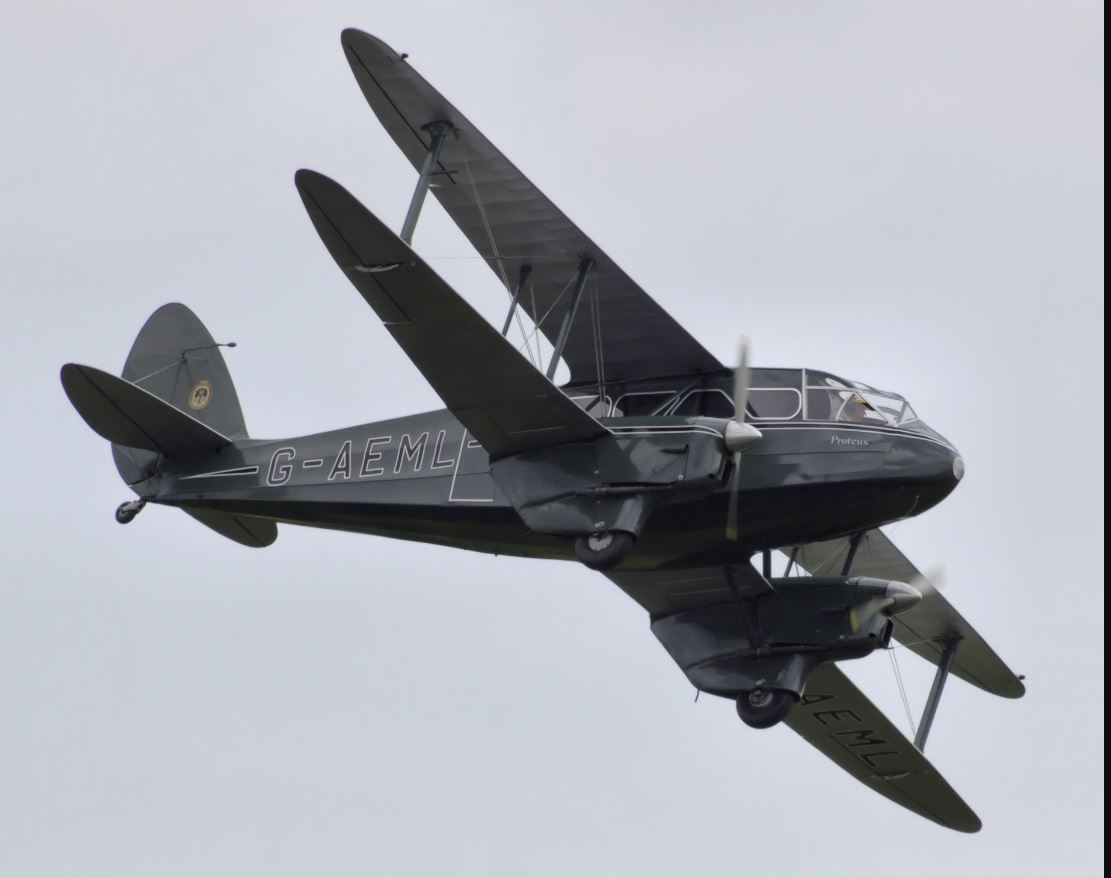De Havilland DH.89 Dragon Rapide
From Our Contribution
Remarks
Early work to design a four engine biplane for Australian use led to the two engine version aimed at being more comfortable and faster. In May 1934 a prototype powered by two Gipsy Six engines underwent evaluation by the RAF. By Nov 1934 full scale production was underway, with 205 aircraft delivered to buyers before war broke out. The Rapide competed unsuccessfully with the Avro Anson in 1935 for a RAF contract for coastal surveillance. Flaps were added to production aircraft in 1937, along with metal propellers.
With the outbreak of war, Rapides in the UK and Australia were impressed into military service and used for radio and navigation training, passenger transport and communications. A military version was known as the de Havilland Dominie. Post war many were returned to civilian use, with a very small number still operational.
General characteristics
- Crew: Pilot + 8 passengers
- Length: 10.5 m
- Wingspan: 14.6 m
- Height: 3.1 m
- Empty weight: 1,460 kg
- Max takeoff weight: 2,490 kg
- Powerplant: 2 x de Havilland Gipsy Six engines 200 hp each
- Maximum speed: 253 km/h at 305 m
- Range: 920 km
- Service ceiling: 5,090 m
- Armament Nil
Crew members
No. 1 Air Observers School RAAF
- Gerard Henzell Straughan Hemy Jan - Apr 1941

